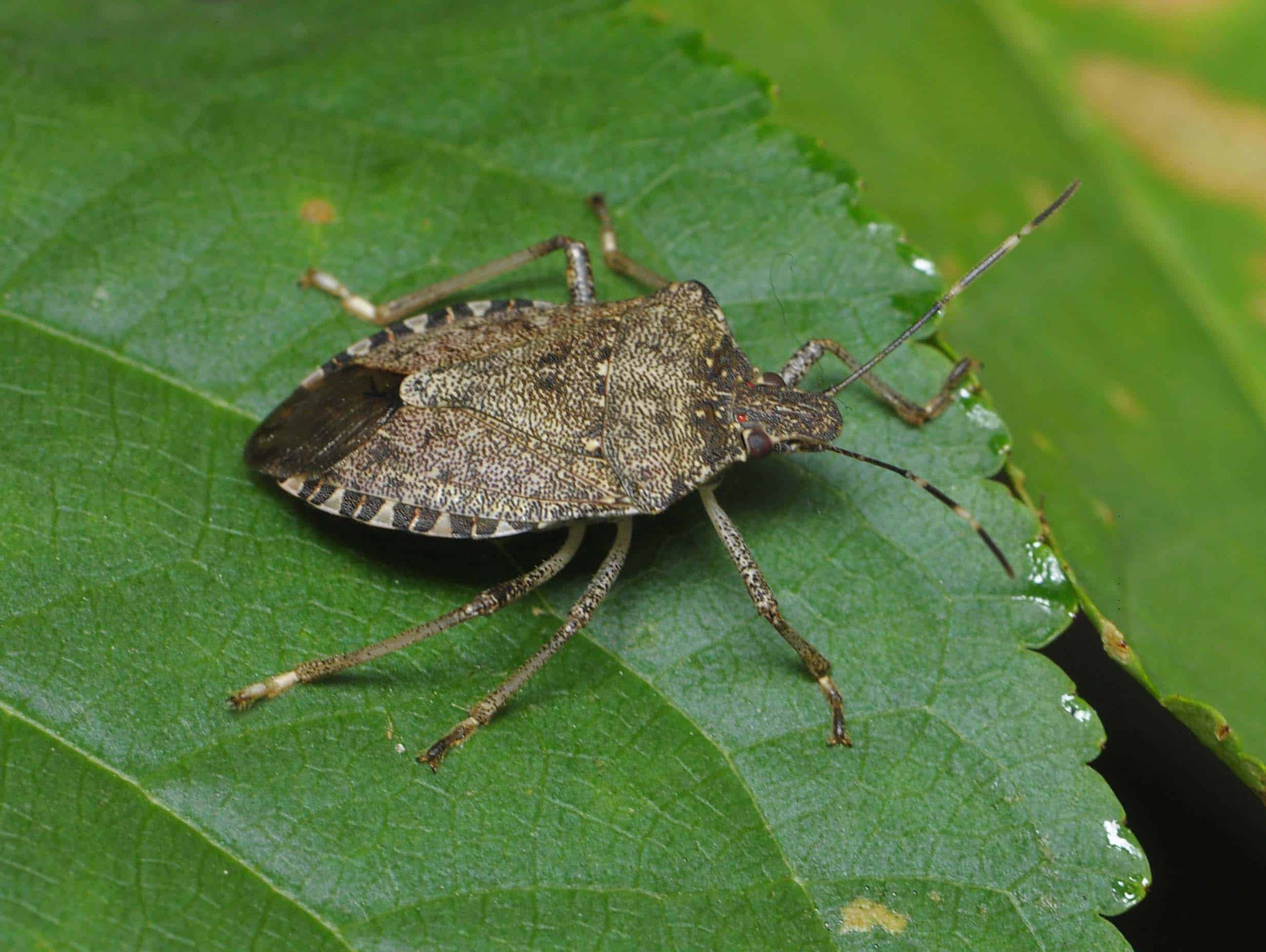Are you familiar with the brown marmorated stink bug yet? Its speckled brown coloring and shield shape are quite distinctive.
Are you familiar with the brown marmorated stink bug yet? Its speckled brown coloring and shield shape are quite distinctive. You’ll find them crawling on your exterior walls, clinging to your screens, and creeping in your curtains when the air begins to chill. That is because these bugs, that normally plague farmers and their crops, know that burrowing into your home is their best chance of surviving the winter. It is like a big warm tree–and since they usually overwinter in the bark of trees–it seems only natural to hide in the bark of your house. If you have siding, you’re sure to have stink bugs looking for a hole to squeeze in.
What to Know About Stink Bugs
-
Stink bugs are a new pest in Missouri.
-
These bugs excrete a viscous fluid from their abdomen that has a foul smell to it. If you squish them, it won’t take long to realize the error of your ways. The smell of dirty socks and fermented funk will soon fill the air.
-
The stinky fluid of the stink bug can also stain. These stains can be hard to get out, depending on the material the mark is on.
-
These are perhaps the worst fliers in the world. That is why you’ll get them smacking into your temple as you’re walking through the living room. It is not that they are particularly interested in you. It is just that they are unable to avoid even the largest objects strolling in front of them.
How to Prevent Them
Now that you are familiar with these bugs, here are a few ways you can prevent them from driving you absolutely crazy:
-
Check all your screens for holes or tears. Stink bugs can slip through the smallest of holes–and windows and doors are a popular entry point.
-
Check around your windows for gaps. Use tape or caulk to cover them.
-
Examine your exterior walls and foundation, especially around fixtures, outlets, pipes, and air conditioning units. If you find any holes, fill them. Rotted wood is especially vulnerable to all insects. Patch those areas until you can have them properly repaired.
-
Switch white exterior lighting for insect-resistant yellow lighting, and keep windows covered at night–if you can. Stink bugs are drawn to light.
-
Cover vents and your chimney with window grade screens.
-
Remove areas for stink bugs to hide on the exterior of your home. This includes in the garden or other areas of vegetation. Consistent weeding and cutting back vegetation and shrubs can help limit the number of outdoor hiding places for stink bugs in St. Louis, making them more vulnerable to the few animals that eat them outside.
-
Have your exterior walls treated by a professional. Professionals know how to mix pesticides and have the equipment to reach rooflines and high windows. This will keep stink bugs from hanging out on your walls. If they aren’t on your walls, they’re not waiting to fly in when you open the door, and they aren’t exploring your defenses for the gaps you missed.
-
Vacuum these pests up whenever you find them. Make sure you dispose of the contents of the vacuum bag outdoors so that these pests don’t escape and get back into your home.
Stink bugs are not known for biting and they aren’t known to spread any diseases, but having them entering your home in large numbers can be a real nuisance. The stinky odor they emit can be a frustrating for homeowners, while pets and children may spend time playing with them or even eating them. Preventing stink bugs before they become a problem in your Missouri home is the best way to avoid encounters with these obnoxious pests. While Stink bugs are new to Missouri, they aren’t new to pest management companies. There are many exclusion methods, and green ways to manage these bugs. Contact the pros at Rottler today, and find out how you can keep stink bugs out of your house this fall.


